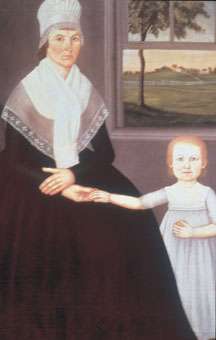Palmer Museum of Art
|
| |
| Established | October 7, 1972 |
|---|---|
| Location | Curtin Road, University Park, PA 16802-2507 |
| Coordinates | 40°48′02″N 77°51′56″W / 40.800483°N 77.865525°W |
| Type | Art museum |
| Collection size | Over 6000 works |
| Director | Jan Muhlert |
| Curator | Joyce Robinson |
| Architect | Charles Willard Moore |
| Owner | Penn State |
| Nearest car park | Parking on campus |
| Website |
www |

The Palmer Museum of Art is the art museum of Pennsylvania State University, located on the University Park campus in State College, Pennsylvania.
Collections
It has a permanent collection of more than 6,000 works. The American collection features early portraits by John Brewster, Jr., Jacob Eichholtz, Rembrandt Peale, Gilbert Stuart, and Benjamin West; 19th-century landscape paintings by Sanford Robinson Gifford, George Inness, John F. Kensett, and William Trost Richards; Ashcan School works by William Glackens, Robert Henri, Maurice Prendergast, Everett Shinn, and John Sloan; Modernist works by Alexander Calder, Arthur Dove, Marsden Hartley, Joseph Stella, Marguerite Zorach, and a major collection of works by Seymour Lipton. It also has significant holdings of American prints, photographs, and contemporary art.
The European collection features Old Master paintings, 19th-century paintings, prints and drawings, and 20th-century photographs and ceramics. Its non-Western holdings include collections of Japanese woodcuts, Asian sculpture and ceramics, African sculpture, and Peruvian ceramics. There is also an adjoining sculpture garden.
One of the museum's most popular works is a massive pair of bronze lion's paws that flank the building's front steps. Modeled by sculptor Paul Bowden in 1993, they playfully evoke the traditional lion statues that flank Beaux-arts buildings, such as the New York Public Library, and also pay tribute to Penn State's mascot, the Nittany Lion.[1]
History
The University Art Museum's original building was a Brutalist "box," containing three galleries, that opened in 1972.[2] Post-modernist architect Charles Willard Moore greatly expanded the building in 1993, converting the "box" into a 150-seat auditorium, and wrapping eleven new galleries around it. He created a lively entrance plaza, reminiscent of his Piazza d'Italia (1978) in New Orleans, Louisiana, adding multiple levels and a graduated arcade of brick arches resting on cartoon Tuscan columns. The museum was renamed to honor James and Barbara Palmer, who initiated the campaign to expand the building in 1986 with a $2 million gift.
The museum's founding director was William Hull, for whom one of the galleries is named. The current director is Jan Muhlert.
The Friends of the Palmer Museum of Art was founded in 1974 to aid in fund-raising and public outreach.
The museum is open Tuesdays through Sundays. Admission is free.
References
- ↑ Palmer Museum of Art from Arbonies King Vlock.
- ↑ "Palmer Museum 40th Anniversary," from Penn State News, October 31, 2012.
External links
| Wikimedia Commons has media related to Palmer Museum of Art. |
40°48′02″N 77°51′57″W / 40.8005°N 77.8657°W